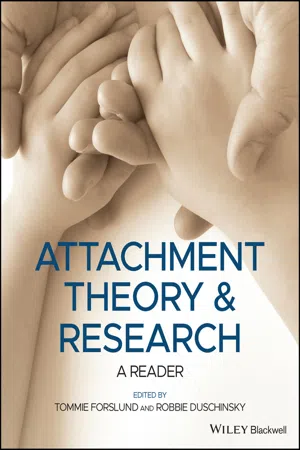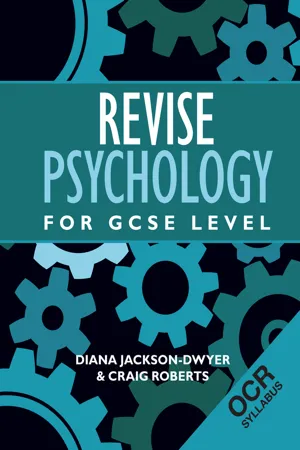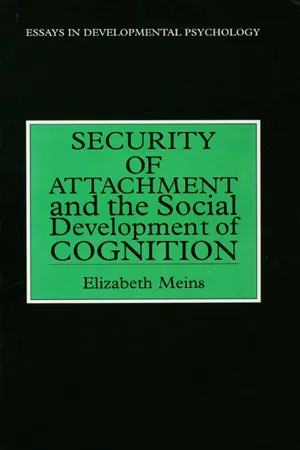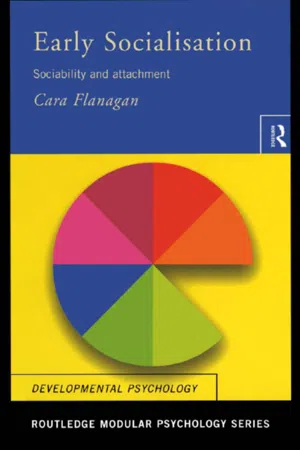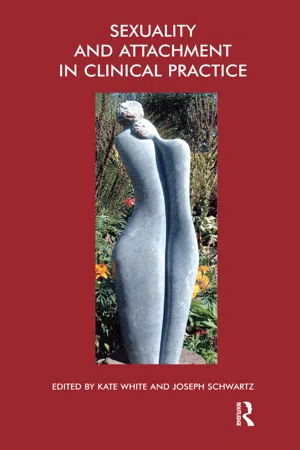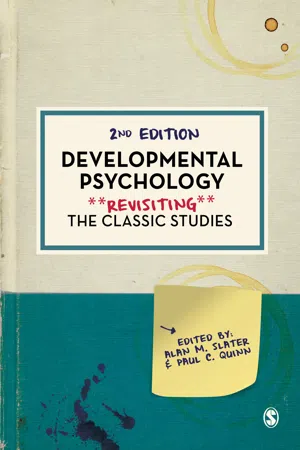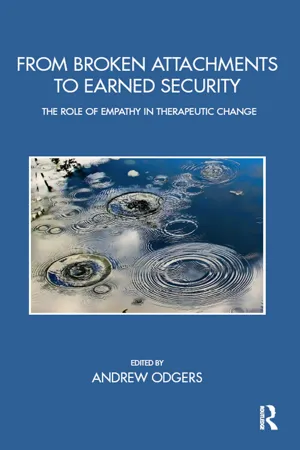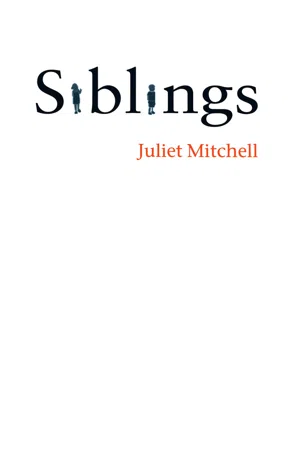Psychology
Bowlby Theory of Maternal Deprivation
Bowlby's Theory of Maternal Deprivation suggests that a child's separation from their primary caregiver, particularly the mother, can lead to long-term psychological and social difficulties. According to Bowlby, the absence of a nurturing and consistent maternal figure during early childhood can result in attachment issues, emotional instability, and behavioral problems in later life.
Written by Perlego with AI-assistance
8 Key excerpts on "Bowlby Theory of Maternal Deprivation"
Learn about this page
Index pages curate the most relevant extracts from our library of academic textbooks. They’ve been created using an in-house natural language model (NLM), each adding context and meaning to key research topics.
- eBook - ePub
Attachment Theory and Research
A Reader
- Tommie Forslund, Robbie Duschinsky, Tommie Forslund, Robbie Duschinsky(Authors)
- 2021(Publication Date)
- Wiley-Blackwell(Publisher)
Subsequent reviews of the literature (Ainsworth, 1962 ; Ainsworth & Bowlby, 1953 ; Bowlby, 1952) led to a distinction between “maternal deprivation” as insufficiency of interaction of a child with the mother figure and “mother–child separation” as discontinuity of the bond of child to mother after it had become established. Although prolonged deprivation beginning before an infant had become attached to its mother was shown to have a very adverse effect on development (e.g., Goldfarb, 1943), in most of the research literature deprivation and separation were confounded, dealing with infants and young children removed from home and parents to whom they had already become attached and placed in an unfamiliar environment among unfamiliar caregivers, none of whom had sufficient interaction with the child to substitute as an adequate mother figure. Noting similar adverse effects, Bowlby directed research that shifted its main focus from outcome to process in an attempt to understand the sequence of responses a young child shows when separated under depriving circumstances and, also, to account for the sequence of readjustments in the child’s behavior toward his or her family when eventually they are reunited. These responses are reviewed in the introductory sections of each of the three volumes of his Attachment and Loss series (Bowlby, 1969, 1973, 1980) and are so focal to his theory that they will be summarized here. Three phases of response to major separation may be identified in children between the ages of one and four years: (1) protest, in which the child, both distressed and angry, tries by all means possible to regain the mother; (2) despair, in which the child becomes withdrawn and apathetic, with muted protest, and seems to have lost hope that the mother will return; and (3) detachment, in which the child’s longings for the mother and anger at her abandonment of him or her seem to have disappeared - eBook - ePub
- Diana Jackson-Dwyer, Craig Roberts(Authors)
- 2015(Publication Date)
- Psychology Press(Publisher)
Child attempts to follow the mother, scream and do everything they can to recover her. The child will continue looking for her long after she has gone Stage 2: Despair Child will often sob but in a more "helpless" way, making far fewer attempts to find the mother. The child tends to show a distinct loss of hope. Stage 3: Detachment Child appears calm and even "settled". However, this apparent calm often masks underlying distress. The child appears to be emotionally "flat", not really responding very much to anythingLong-term effects
Bowlby's maternal deprivation hypothesis
Bowlby argued that if children do not have their need for attachment satisfactorily met, they may suffer from maternal deprivation .■ Maternal deprivation is said to occur when a child under the age of 3 years is deprived of his or her mother figure for a period of at least 3 months, or has a number of changes of mother figure. Bowlby argued that research, mainly in orphanages and hospitals, showed that maternal deprivation of this kind has the following effects:- • Emotionally disturbed behaviour such as bed-wetting.
- • Dwarfism in children (not growing properly).
- • Depression.
- • Intellectual retardation.
- • A crippling of the capacity to make relationships with other people – a so-called affectionless psychopathy .
Bowlby believed that there is a serious risk (around 25%) of the damage being permanent unless the situation can be reversed in the first 3 years of life.The following study is one of several on which Bowlby’s maternal deprivation hypothesis is based.Study: 44 Juvenile Thieves: Bowlby (1944)Aim: To investigate the causes of delinquency in adolescence and assess whether it was related to separation in early life.Method: From the clinic for disturbed adolescents where he worked, Bowlby selected two groups of boys:- • 44 juveniles who had a criminal record for theft.
- • 44 adolescents with emotional problems who had never been in trouble with the law.
Bowlby interviewed them all to assess whether they showed signs of affectionless psychopathy. He also interviewed the families to see if the boys had had any significant separations from their main carers in the first 2 years of their lives. He studied the background and personality of the young thieves over 3 years. - Elizabeth Meins(Author)
- 2013(Publication Date)
- Psychology Press(Publisher)
cope with this separation. I shall also consider the possibility that the causes of such individual differences lie in the patterns of early dyadic interaction between infant and mother. In order to put these ideas into context, it is first necessary to consider the ideas of those who placed the child’s tie to the mother at the focal point of their work: Bowlby (1958, 1969) and Freud (e.g. 1931).Bowlby’s Theory of AttachmentRegardless of whether researchers agree with his theoretical claims, John Bowlby’s theory of attachment (1958, 1969) represents the starting point for research into the relationship between infant and caregiver. The theoretical emphasis of his work thus underpins, to varying degrees, virtually all subsequent work on the infant-mother attachment relationship.The original spur for Bowlby’s investigation of the tie between a mother and her child came from observations he made in his first job, working as a volunteer at a school for maladjusted children. The problems that he encountered in these children convinced him of the importance of balanced family relationships in the development of a psychologically healthy personality, and led to his decision to train as a child psychiatrist (Senn, 1977). In the 1940s, Bowlby embarked on a number of studies which investigated the adverse effects of maternal deprivation and institutional care on children’s psychological well being. This background made him an obvious choice for the World Health Organisation (WHO) when they sought to commission an investigation into the mental health of children made homeless or orphaned by the Second World War. Bowlby first published his findings in a report to the WHO in 1951, in which he detailed his views on the importance of maternal care for the child’s subsequent mental health. Bowlby’s first exposition of a theory of infant-mother attachment- eBook - ePub
Early Socialisation
Sociability and Attachment
- Cara Flanagan(Author)
- 2002(Publication Date)
- Routledge(Publisher)
Attachment. This is the psychodynamic component of the theory. To be securely attached is to feel safe and secure. Insecure attachment leads to dependency.- Attachment behaviour. This is the behavioural component. Feelings of attachment result in the maintenance of proximity. Holmes (1993) called it a ‘spatial theory’ because attachments dictate proximity and they also enable exploration because they provide a safe base.
- The attachment behavioural system. This is the cognitive component, the mental model the individual has of his/her interrelationship with others.
Attachment theory, as distinct from the earlier maternal deprivation hypothesis, focused on the interpersonal processes which create attachments, most particularly the innate tendency in the infant to seek attachment and to elicit caregiver responses through social releasers.Evaluation of Bowlby’s theory
Rutter’s commentary: maternal deprivation reassessed
Michael Rutter published two versions of the book Maternal deprivation reassessed (1972, 1981) and offered some key comments and modifications of Bowlby’s theory. There were two main conclusions in 1972:- Bowlby’s hypothesis that ‘early life experiences may have serious effects on intellectual and psychosocial development, was no longer controversial’.
- However the term ‘maternal deprivation’ covers a ‘most heterogeneous range of experiences…due to quite disparate mechanisms’, most notably:
- Antisocial disorders were due to discord at home not separation.
- Affectionless psychopathy was due to the lack (privation) not the loss (deprivation or separation) of love.
- Intellectual delay stems from a lack of cognitive stimulation rather than emotional deprivation.
In 1981, Rutter further noted, after an extensive review of research, that the consequences of deprivation were not as extreme, nor as consistent, nor as irreversible as Bowlby had suggested. Infants and children who do suffer disruption of attachment relations may also suffer a variety of other - eBook - ePub
- Joseph Schwartz, Kate White, Joseph Schwartz, Kate White(Authors)
- 2018(Publication Date)
- Routledge(Publisher)
Maternal Care and Mental Health by the World Health Organization in 1952. He also studied children in hospital and a residential nursery, in conjunction with James Robertson, who filmed them. The documented sequence of the children’s responses to separation in terms of protest, detachment, and despair provided evidence of separation anxiety. The impact of these ideas on the development of childcare policy has been enormous. The 2001 Bowlby Lecturer, Michael Rutter, discussed institutional care and the role of the state in promoting recovery from neglect and abuse. His lecture was a testament to the continuing relevance of Bowlby’s thinking to contemporary social issues.Although Bowlby joined the British Psychoanalytic Society in the 1930s and received his training from Joan Riviere and Melanie Klein, he became increasingly sceptical of their focus on the inner fantasy life of the child rather than real life experience, and tended towards what would now be termed a relational approach. Thus, in searching for a theory which could explain the anger and distress of separated young children, Bowlby turned to disciplines outside psychoanalysis, such as ethology. He became convinced of the relevance of animal, and particularly primate, behaviour to our understanding of the normal process of attachment. These relational concepts presented a serious challenge to the closed world of psychoanalysis in the 1940s, and earned Bowlby the hostility of his erstwhile colleagues for several decades.The maintenance of physical proximity by a young animal to a preferred adult is found in a number of animal species. This suggested to Bowlby that attachment behaviour has a survival value, the most likely function of which is that of care and protection, particularly from predators. It is activated by conditions such as sickness, fear, and fatigue. Threat of loss leads to anxiety and anger; actual loss to anger and sorrow. When efforts to restore the bond fail, attachment behaviour may diminish, but will persist at an unconscious level and may become reactivated by reminders of the lost adult, or new experiences of loss. - eBook - ePub
Developmental Psychology
Revisiting the Classic Studies
- Alan M Slater, Paul C Quinn(Authors)
- 2020(Publication Date)
- SAGE Publications Ltd(Publisher)
Harlow’s paper had an immediate impact on the ongoing debate about the importance of the mother-infant bond in child psychiatry. During the 1950s, John Bowlby, a British psychiatrist, had published a monograph (1951) on the effects of maternal deprivation on children’s development. In his visits to Harlow’s lab in the 1950s, Bowlby may have been responsible for pointing out to Harlow that his cage-raised monkey colony created conditions that were equivalent to partial social isolation (Suomi, Horst, & Veer, 2008). Harlow’s 1962 paper, in turn, lent support to Bowlby’s efforts to convince psychiatrists and other healthcare professionals that young children could be adversely affected by prolonged or inexplicable separations from their mothers (Horst & Veer, 2008).Harlow’s paper also directed attention toward measuring outcomes that had clear implications for overall adaptation and inclusive fitness. He called attention to motivational systems that served biological functions. In his view, the infant-caregiver bond served not only as a source of protection when confronted with danger, but also as a context in which the child acquired the capacity to form subsequent affectional bonds with peers, sexual partners, and offspring. This approach was influenced by European ethologists, particularly Robert Hinde, and by Harlow’s sensitivity to the effects of different rearing environments ranging from his lab, to the local zoo, to monkeys born and raised in the wild. Harlow’s creativity in designing laboratory environments that elicit attachment, fear, exploratory, and affiliative behavior showed a unique understanding of the importance of context in assessing how early social experience could influence subsequent development. He actively designed environments that tested the interplay between attachment, fear, and exploration. Peer and play environments provided contexts to assess the development of defensive and sexual behavior. The importance of context in observing and assessing behavior greatly expanded approaches to behavioral assessment and motivational systems. - eBook - ePub
From Broken Attachments to Earned Security
The Role of Empathy in Therapeutic Change
- Andrew Odgers(Author)
- 2018(Publication Date)
- Routledge(Publisher)
Bowlby had also sought to bridge the chasm between clinician and researcher. His preparedness to leave the closed world of the psychoanalysis of his time in order to make links with other disciplines, such as animal studies and academic psychology, was vital in the building up of attachment theory. The documented and filmed sequence of children’s responses to separation in terms of protest, detachment, and despair, as researched by James Robertson, provided evidence of separation anxiety. The impact of these ideas on the development of the care of children in hospital has been enormous. The 2001 John Bowlby memorial lecturer, Michael Rutter, discussed institutional care and the role of the state in promoting recovery from neglect and abuse. His lecture was a testament to the continuing relevance of Bowlby’s thinking to contemporary social issues.Although Bowlby joined the British Psychoanalytical Society in the 1930s and received his training from Joan Riviere and Melanie Klein, he became increasingly sceptical of their focus on the inner fantasy life of the child rather than real life experience, and tended towards what would now be termed a relational approach. Thus, in searching for a theory which could explain the anger and distress of separated young children, Bowlby turned to disciplines outside psychoanalysis such as ethology. He became convinced of the relevance of animal and particularly primate behaviour to our understanding of the normal process of attachment. These relational concepts presented a serious challenge to the closed world of psychoanalysis in the 1940s, and earned Bowlby the hostility of his erstwhile colleagues for several decades.The maintenance of physical proximity by a young animal to a preferred adult is found in a number of animal species. This suggested to Bowlby that attachment behaviour has a survival value, the most likely function of which is that of care and protection, particularly from predators. It is activated by conditions such as sickness, fear, and fatigue. The threat of loss leads to anxiety and anger; actual loss leads to anger and sorrow. When efforts to restore the bond fail, attachment behaviour may diminish, but will persist at an unconscious level and may become reactivated by reminders of the lost adult, or new experiences of loss.Attachment theory’s basic premise is that, from the beginning of life, the baby human has a primary need to establish an emotional bond with a caregiving adult. Attachment is seen as a source of human motivation as fundamental as those of food and sex. Bowlby (1979) postulated that: - Then, back again in India a couple of years later, I read in Bowlby an exact confirmation of my earlier observation: children of multiple carers experience extreme anxiety when their mother leaves. But this time there was nothing intellectually problematic about this: such children were merely more insecure by definition as they had not had enough sole mothering. Yet why had Bowlby's understanding not come to me when my stepson first explained my observation? Why does the explanation still slip away from me and then come back but only with an obviousness that darkens the mind? There is, I think, something crucially important in the observation, but also some crucial shortcoming in the explanation. I am reminded that I get ticked off for my very standardized remarks about Bowlby; this happens, I now think, because I express my opinions childishly. That is to say, I speak from a childhood which hasn't had quite enough of a look-in and which thus returns like a symptom, a childhood of what was technically – that is, in Bowlby's terms – maternal deprivation. I had a full-time working mother from my very earliest infancy, two godparents who cared for me when my mother was away at work, and quite possibly there was screaming separation anxiety – except that what my mother recalled was my pre-verbal fury with her (not my relief) when she returned after an atypical weekend field-trip. Bowlby has been felt as a presence all my life because, metaphorically, I am the child he wrote about. Except that I cannot quite recognize myself in any of his descriptions. On the question of multiple carers, Bowlby has been corrected by his own followers. Ainsworth's famous study of Ganda children showed that multiply cared-for and maternally cared-for children show similar levels of separation anxiety. Of this, Jeremy Holmes says: the evidence shows that Bowlby was just plain wrong about multiple care-givers
